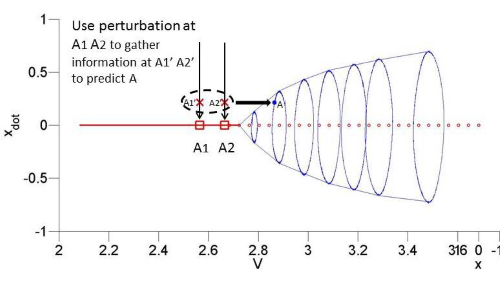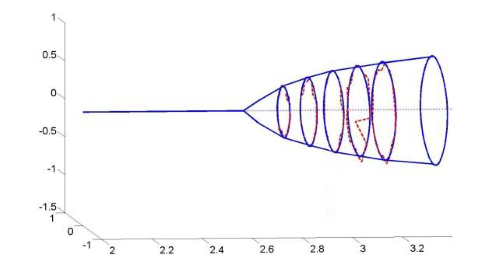-
A
system is parametrically excited when one or some of the coefficients
vary with time. Parametric excitation can be observed in various
engineering and physical systems such as elastic cables, rotating
machines, electrostatic waves in a plasma with radiation and etc.
- Many systems subject to parametric excitation exhibit
critical transition from one state to another as one or several of the
system parameters change.
- Such critical transition, also referred to as bifurcation,
can be quite dangerous in certain cases, and it will be very beneficial
if health monitoring or early warning can be available when the system
is still in the stable regime.
Swing is an interesting case where instability is caused by
parametric excitation
Methods:
- Recoveries from large perturbations in the pre-bifurcation
regime are exploited in the proposed method.

- Recoveries from perturbations slow down as the system gets
closer to the critical transition, which helps us gather information
about the system, and predict the bifurcation diagram.
- Two methods have been exploited to deal with the parametric excitation which causes critical transition to some systems:
- Recoveries are studied in the Poincare section.
- The amplitudes of the harmonic component of the recoveries are studied.
Results:
- A parametrically excited Duffing oscillator is studied. An
electrical circuit is constructed to mimic the behavior of the
oscillator. Recoveries are then collected to forecast the bifurcation
diagram.


|



